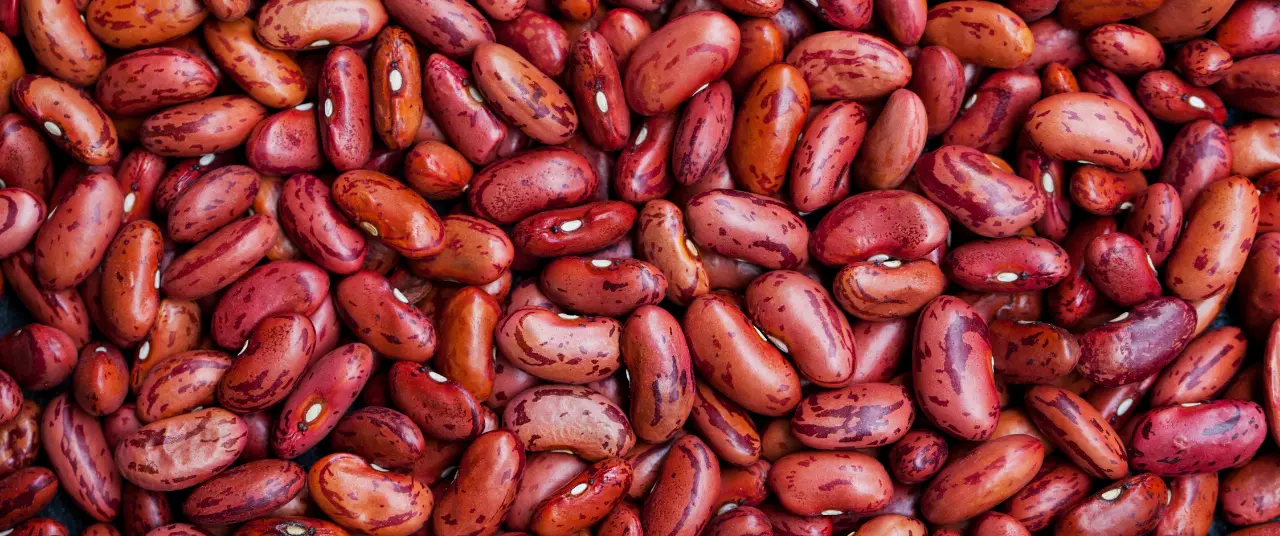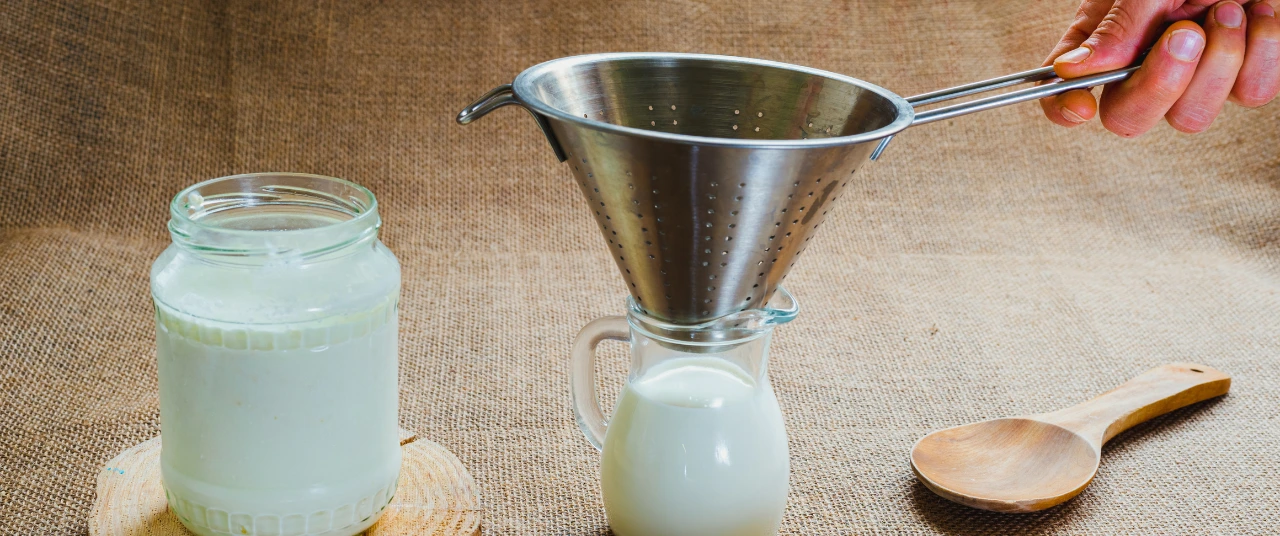What analogue paneer means for your health, and how to spot it






Paneer holds a cherished place in the Indian diet. For many, it’s not just a delicacy but also a versatile staple—a reliable source of protein that seamlessly fits into both everyday meals and special festive spreads. Think about it: this dependable cheese makes for a rich addition to curries, a great centrepiece as appetizers and also softly crumbles its way into the stuffings for rolls, burger patties, and koftas. Paneer also happens to be, often, the first choice for vegetarians who want to consume a hearty alternative to meat–it’s perfect for those particular about meeting their protein intake in a meat-free diet. Paneer has also come under the scanner for being an extremely adulterated product in the Indian market.
Recently there’s been a new kid on the block: analogue paneer. Experts and social media users have raised an alarm over how this imitation product is often sold to unknowing consumers as real, fresh paneer.
What exactly are we eating, and how is analogue paneer different from the real thing?
What is analogue paneer, really?
According to the Food Safety and Standards Authority of India (FSSAI), dairy “analogues” are products where milk constituents are replaced wholly or partly with non-dairy ingredients. The end product is designed to look, feel, and act like the original.
Milk-based paneer–the kind we make at home, or buy from local dairies or dairy companies–is made by curdling milk with an acid (like lemon juice or vinegar). The curds are separated from the whey, and pressed into the all-familiar paneer block.
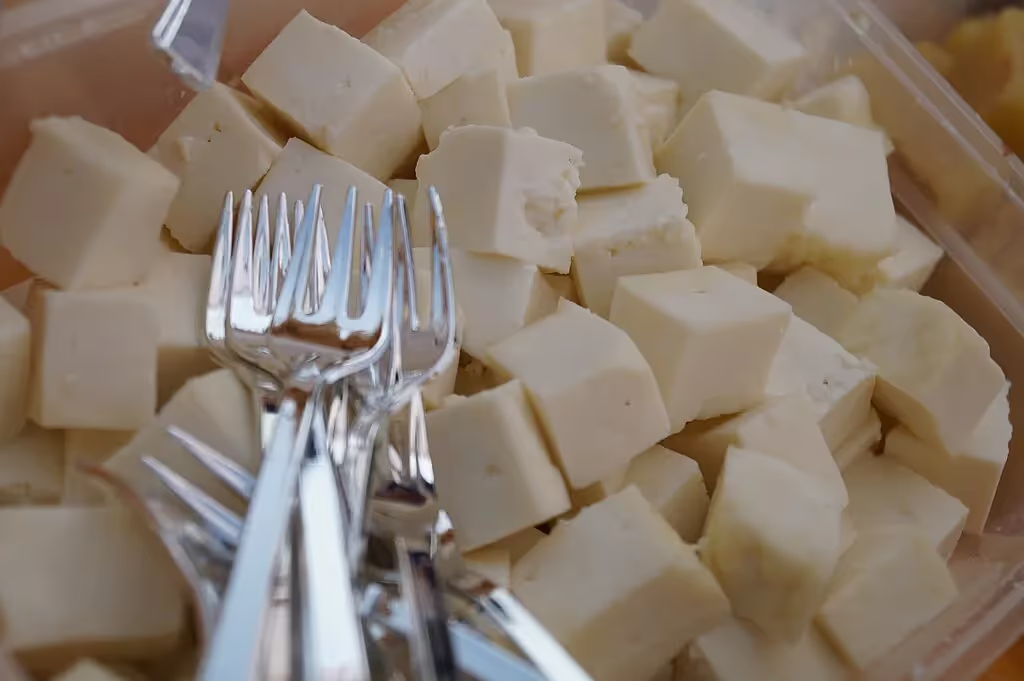
Analogue paneer, on the other hand, uses a cocktail of vegetable oils, starch, milk solids, and emulsifiers—less cow, more chemistry. Here’s the thing: to make real paneer, whole milk with lots of good fat is used, because paneer is about 20-25% fat, and this is what gives this cheese its rich, buttery texture. To imitate it, you need an oil that solidifies at room temperature, much like milk fat or butter…but of course, cheaper. That’s where vegetable oils like palm oil come into play. This oil is mixed with milk solids to mimic the milk fat and milk protein combination; emulsifiers help blend this oil with water and other moisture, and then starch is added to this mix, to mimic the firm texture of paneer, as well as make sure that this product holds structure when heated or cooked.
But even with these extra ingredients, analogue paneer is cheaper than the real deal. Much cheaper!
A kilo of real paneer might cost around ₹400. Analogue paneer? About ₹200–250. That 50% discount comes with ingredients that are far more budget-friendly—and sometimes, body-unfriendly too.
Also read: AI or A2? India’s milk dilemma explained
Criticisms of analogue paneer
At first glance, slabs of real and imitation paneer may look identical. But when it comes to nutrients, they’re not even close. Real paneer packs approximately 18–20g of protein per 100g. Analogue paneer often falls short, delivering only 7–10g, depending on its formula. For vegetarians who rely on paneer to fill their protein intake, this swap could mean a slow deficit over time.
Another serious concern, when it comes to analogue paneer, is trans fats. Real paneer contains 20–25g of fat—mostly natural saturated fats. Analogue paneer has 15–20g, but here's the catch: a significant portion of it can be trans fat—the type linked to heart disease, diabetes, and bad cholesterol levels (LDL). This is because to mimic the nature of milk fat, which stays solid at room temperature (think about butter in your cool kitchen), manufacturers need to use hydrogenated vegetable oil–a variant which introduces a lot of trans fats into the oil. Other than this, analogue paneer can also cause bloating, acidity, nausea, and even diarrhoea.
.avif)
Also read: Whey to go: A complete guide to protein
How to spot analogue paneer
If you're shopping for packaged and branded paneer, be sure to check the label. FSSAI mandates manufacturers to either declare the word “analogue” on the paneer packet, or at least print the phrases “Contains oil (or other substitutes)” or “Contains no milk.” It’s good to be cautious: analogue paneer packets may not even contain the word–but they will always have an ingredient list. Check the list to see if instead of milk fat, you see vegetable oil and starch. Real paneer’s ingredient list will not have these constituents.
Analogue paneer will also cost less—if it's too good to be paneer, it probably isn't. If a paneer dish in a restaurant, or a packet of unbranded paneer in a store costs much less than usual, you can ask the chef or the shop owner for a clarification.
Already have some paneer at home? Here's how to play detective:
- Taste test: Real paneer tastes fresh and milky. Analogue paneer feels rubbery, and may melt easily when heated.
- Drop test: Dunk it in hot water, and observe. Real paneer stays intact. The analogue variant may fall apart or release oil.
- Pan test: Heat up your paneer on a pan. If it melts and oozes oil, it’s not your usual dairy delight. Real paneer should stay firm and turn that familiar, toasty shade of brown on the outside.
- Iodine test: Boil the cube in water and add iodine. If it turns blue, then you have analogue paneer on your hands. The iodine detects the presence of starch.
- Powder tests: Mix cooled boiled paneer with arhar (pigeon pea) or soybean powder. A red tint indicates adulteration.
Restaurant food is, of course, tougher to test. There is one trick: press the paneer between your fingers. Real paneer holds its shape when mashed gently. Analogue paneer, on the other hand, crumbles very quickly.
Also read: Detox teas: Slim claims, heavy consequences
The ethics of analogue paneer
The debate over “fake” dairy products isn’t a new one. The use of vegetable oils in “frozen desserts” has also come under the scanner before–in fact, “frozen desserts” is also a regulated analogue dairy product.
However, the question still remains: are analogue paneer and frozen desserts merely products on offer, or a deliberate effort by giant corporations to deceive consumers? The words “analogue paneer” or “non-dairy” may be very easy to spot on labels in kirana stores, supermarkets and quick commerce apps, but these labels are entirely missing in restaurant menus. Even though they are required to, many restaurants don’t disclose their usage of analogue paneer over dairy paneer to achieve higher profit margins.
Moreover, India isn’t a label-sensitive market. Although consumers may read labels, a survey conducted by the National Institute of Nutrition across five cities found that this is mostly to look at brand names and expiry dates. In fact, only 9% of those surveyed made sure to read the nutritional value index (which includes sugar, fats, trans fat, calories, carbohydrates, protein) every single time. 28% of the group read it sometimes, and 63% didn’t read it at all. Where India is sensitive, is price. Paneer is generally considered an expensive ingredient, which is why analogue paneer has emerged as a popular alternative for those players who believe it can serve the same purpose as an ingredient.
Analogue paneer also poses a threat to dairy farmers. When the consumer can so easily confuse milk-based paneer for analogue paneer, it forces dairy farmers to enter into an unfair price competition with the makers of its analogue counterpart.
The rise of wellness culture in India has seen the Indian consumer become more and more interested in what they are consuming. In order for the paneer segment to serve this consumer fairly, manufacturers, FMCG giants and restaurants must commit to transparency, ensuring that those who opt for analogue paneer are doing so purposefully and with awareness.
{{quiz}}
Explore other topics
References

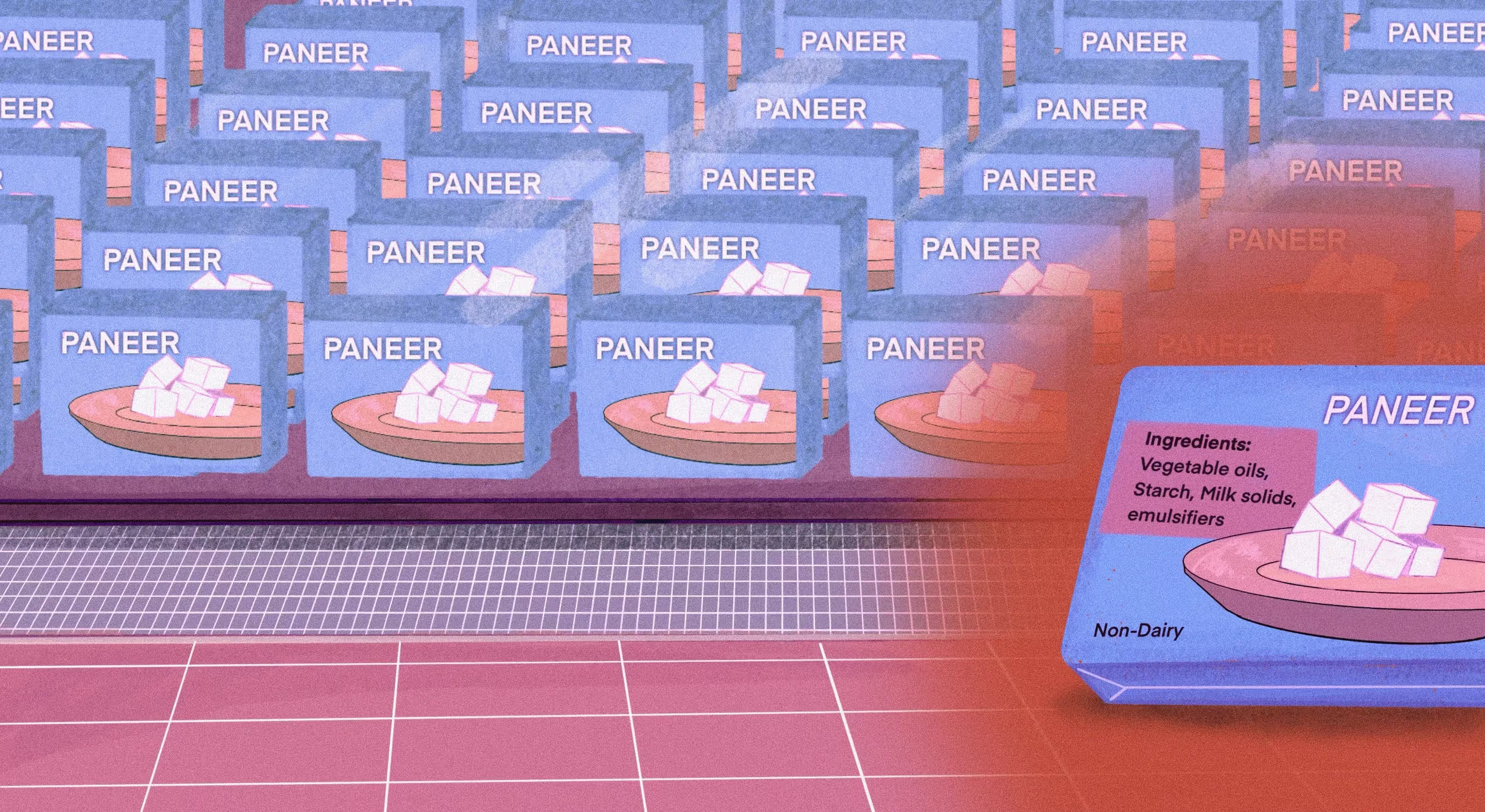
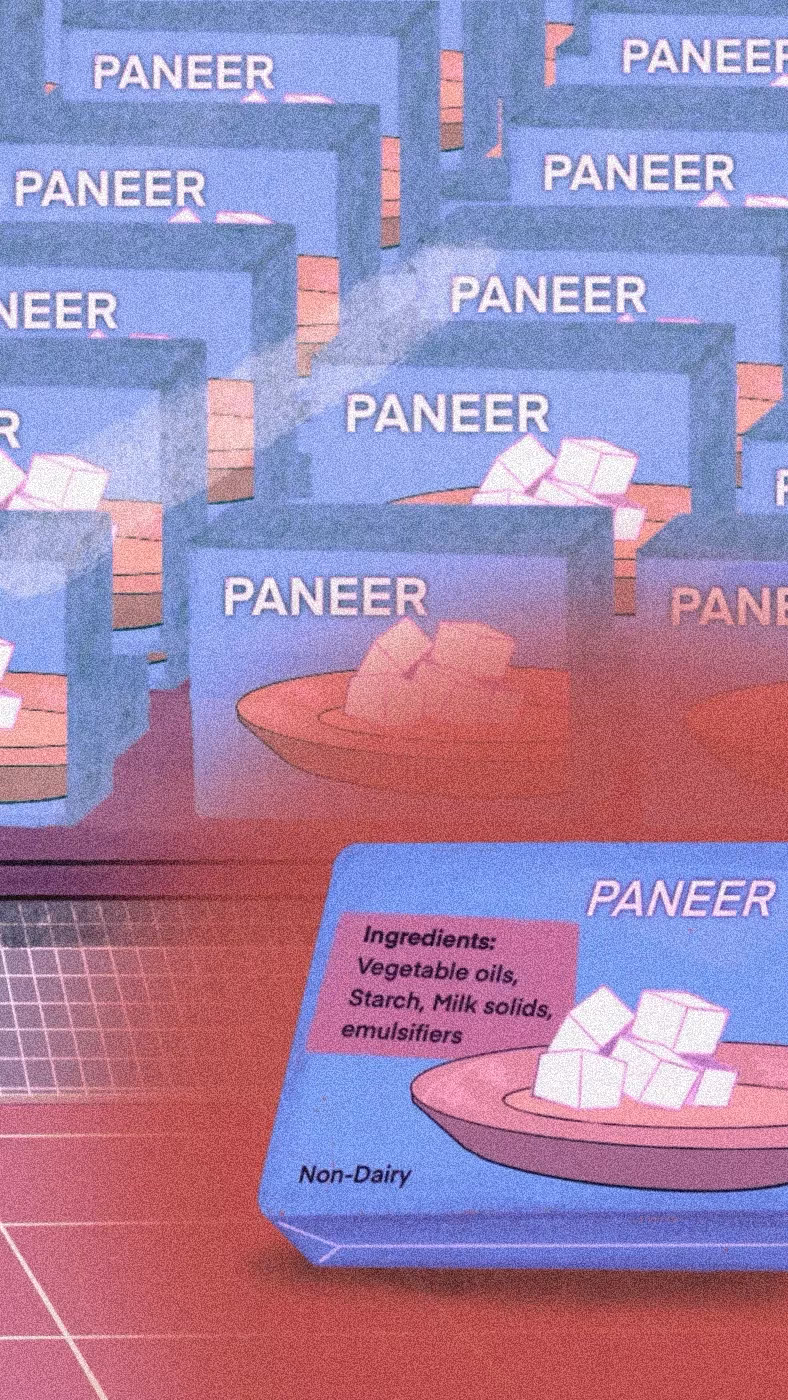

.webp)

.avif)


